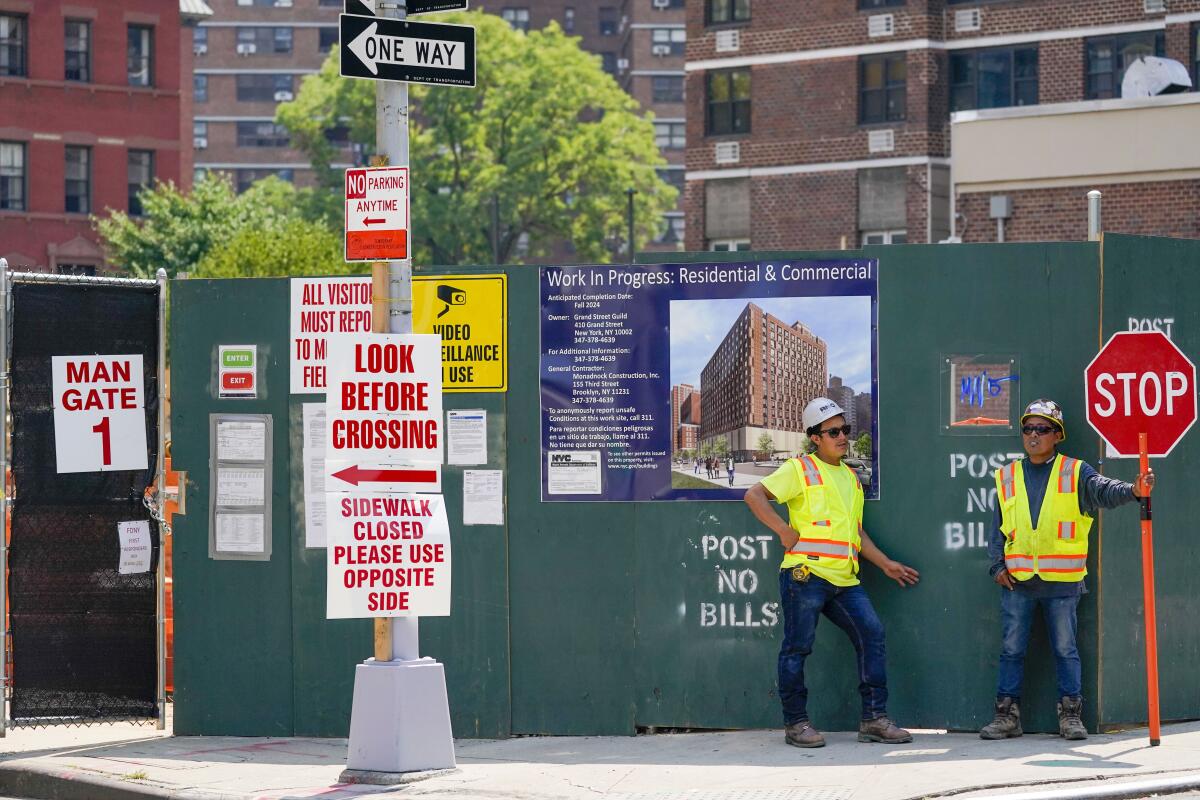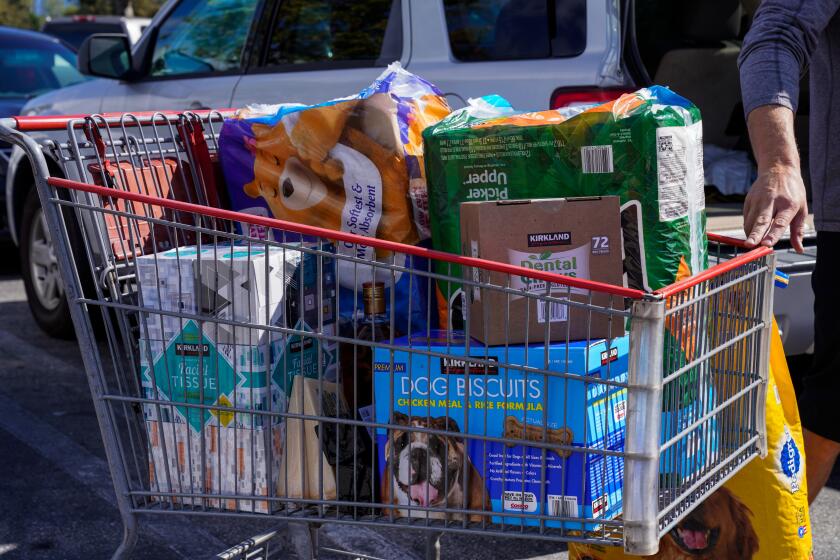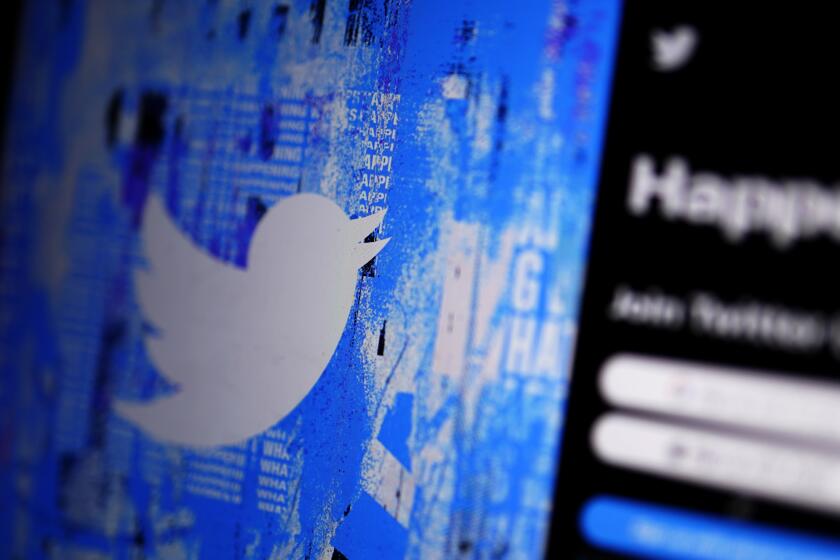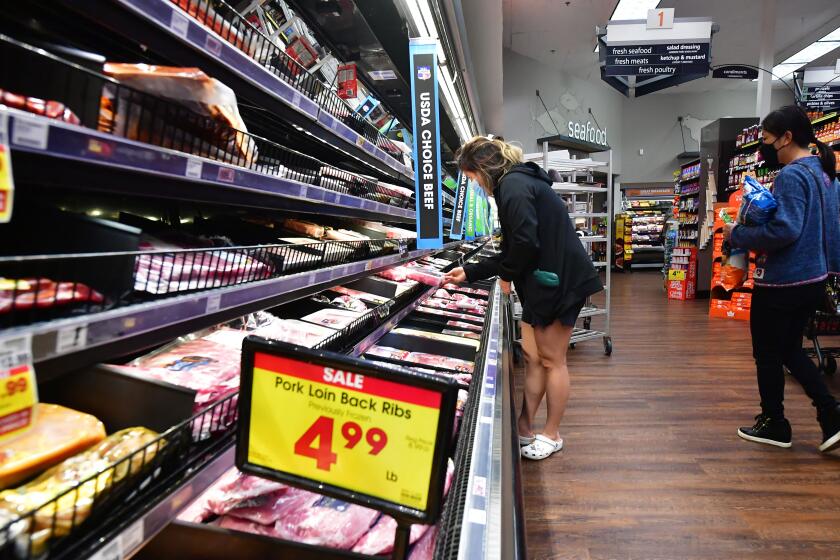America’s hiring boom continues as employers add 528,000 jobs in July

- Share via
WASHINGTON — Defying anxiety about a possible recession and raging inflation, America’s employers added a stunning 528,000 jobs last month, restoring all the jobs lost in the coronavirus-induced recession. Unemployment fell to 3.5%, the lowest rate since the pandemic struck in early 2020.
July’s job creation was 130,000 more than the number produced in June, and the most since February.
Friday’s jobs numbers from the Labor Department arrive amid a growing consensus that the U.S. economy is losing momentum. The economy shrank in the first two quarters of 2022 — an informal definition of recession. But most economists believe the strong jobs market has kept the economy from slipping into a downturn.
The strong jobs numbers will intensify the debate over whether the U.S. is in a recession.
“Recession — what recession?” Brian Coulton, chief economist at Fitch Ratings, wrote after the numbers came out. “The U.S. economy is creating new jobs at an annual rate of 6 million — that’s three times faster than what we normally see historically in a good year.”
Economists had expected 250,000 additional jobs last month.
Inflation’s relentless surge didn’t merely persist in June. It accelerated. Here’s why.
There are, of course, political implications in the numbers: Rising prices and the risk of recession are likely to weigh on voters’ minds in November’s midterm elections as Democrats seek to maintain control of Congress.
President Biden took credit for the resilient labor market Friday, saying it was “the result of my economic plan.”
The president has boosted job growth through his $1.9-trillion coronavirus relief package and $1-billion bipartisan infrastructure law last year. Republican lawmakers and some leading economists, however, point to that government spending as the reason for current inflation levels, the likes of which haven’t been seen in 40 years.
And for millions of Americans, it is the fading power of paychecks amid soaring inflation that remains front and center.
It’s imperative that the Ukrainian government generate more tax revenues if it’s to keep fighting Putin’s invading army.
Hourly earnings posted a healthy 0.5% gain last month and are up 5.2% over the last year. That’s not enough to keep up with inflation, meaning that many Americans, especially the poorest, are having to scrimp in the face of high prices for groceries, gas and even school supplies.
“There’s more work to do, but today’s jobs report shows we are making significant progress for working families,” Biden said Friday.
The Labor Department also revised May and June hiring, saying an extra 28,000 jobs were created in those months. Job growth was especially strong last month in the healthcare industry and at hotels and restaurants.
The jobless rate fell as the number of Americans saying they had jobs rose by 179,000 and the number saying they were unemployed dropped by 242,000. But 61,000 Americans dropped out of the labor force in July, trimming the share of those working or looking for work to 62.1% last month from 62.2% in June.
Elon Musk has countersued Twitter, repeating his contention that the company held back information and misled his team about its true user base.
The strong job numbers are likely to encourage the Federal Reserve to continue raising interest rates to cool the economy and combat resurgent inflation.
“The strength of the labor market in the face of ... rate-tightening from the Fed already this year clearly shows that the Fed has more work to do,” said Charlie Ripley, senior investment strategist at Allianz Investment Management. “Overall, today’s report should put the notion of a near-term recession on the back burner for now.”
The economic backdrop is troubling, however. Gross domestic product — the broadest measure of economic output — fell in the first and second quarters; consecutive drops constitute one definition of a recession.
The resiliency of the current labor market, especially the low jobless rate, is the biggest reason most economists don’t believe a downturn has started yet, though they increasingly fear that one is on the way.
New Yorker Karen Smalls, 46, started looking for work three weeks ago, via job sites such as ZipRecruiter and Indeed, as a support staffer to social workers who serve those with mental health issues.
Breaking News
Get breaking news, investigations, analysis and more signature journalism from the Los Angeles Times in your inbox.
You may occasionally receive promotional content from the Los Angeles Times.
“I didn’t realize how good the job market is right now,’’ she said shortly after her fifth interview this week. “You look at the news and see all these bad reports ... but the job market is amazing right now.’’
A single mother, she is weighing several offers, looking for one that is close to her home in Manhattan and pays enough for her to take care of her two children.
Recession is not an American fear alone.
In Britain, the Bank of England projected Thursday that the world’s fifth-largest economy would slide into recession by the end of the year.
Russia’s war in Ukraine has darkened the outlook across Europe. The conflict has made energy supplies scarce and driven prices higher. European countries are bracing for the possibility that Moscow will keep reducing — and perhaps completely cut off — flows of natural gas, used to power factories, generate electricity and keep homes warm in winter.
Southern California’s median home sale price dropped to $750,000 in June, another sign that the ultra-competitive market is slowing down.
If Europeans can’t store enough gas for the cold months, rationing may be required by industry.
Economies have been on a wild ride since COVID-19 hit in early 2020.
The pandemic brought economic life to a near standstill as companies shut down and consumers stayed home. In March and April 2020, American employers slashed 22 million jobs, and the economy plunged into a deep two-month recession.
But massive government aid — and the Federal Reserve’s decision to slash interest rates and pour money into financial markets — fueled a surprisingly quick recovery. Caught off guard by the strength of the rebound, factories, shops, ports and freight yards were overwhelmed with orders and scrambled to bring back the workers they furloughed when COVID hit.
Mortgage rates in the U.S. slipped below 5% for the first time in almost four months, giving borrowers a reprieve after this year’s rapid surge.
The result has been shortages of workers and supplies, delayed shipments and rising prices. Inflation in the U.S. has been rising steadily for more than a year. In June, consumer prices jumped 9.1% from a year earlier — the biggest increase since 1981.
The Federal Reserve underestimated inflation’s resurgence, thinking prices were rising because of temporary supply chain bottlenecks. It has since acknowledged that the current spate of inflation is not, as it was once described, “ transitory.”
Now the central bank is responding aggressively. It has raised its benchmark short-term interest rate four times this year, and more rate hikes are ahead.
Higher borrowing costs are taking a toll. Rising mortgage rates, for instance, have cooled a red-hot housing market. Sales of previously occupied homes dropped in June for the fifth straight month.
If rising prices are stressing your finances, here are some things you can do.
Real estate companies — including lending firm LoanDepot and online housing broker Redfin — have begun laying off workers.
Before Friday’s blockbuster hiring report, the labor market had shown other signs of wobbliness.
The Labor Department reported Tuesday that employers posted 10.7 million job openings in June — a healthy number but the lowest since September.
And the four-week average number of Americans signing up for unemployment benefits, a proxy for layoffs that smooths out week-to-week swings, rose last week to the highest level since November, though the numbers may have been exaggerated by seasonal factors.
“Underestimate the U.S. labor market at your own peril,” said Nick Bunker, head of economic research at the Indeed Hiring Lab. “Yes, output growth might be slowing, and the economic outlook has some clouds on the horizon. But employers are still champing at the bit to hire more workers. That demand may fade, but it’s still red hot right now.’’
More to Read
Inside the business of entertainment
The Wide Shot brings you news, analysis and insights on everything from streaming wars to production — and what it all means for the future.
You may occasionally receive promotional content from the Los Angeles Times.
















